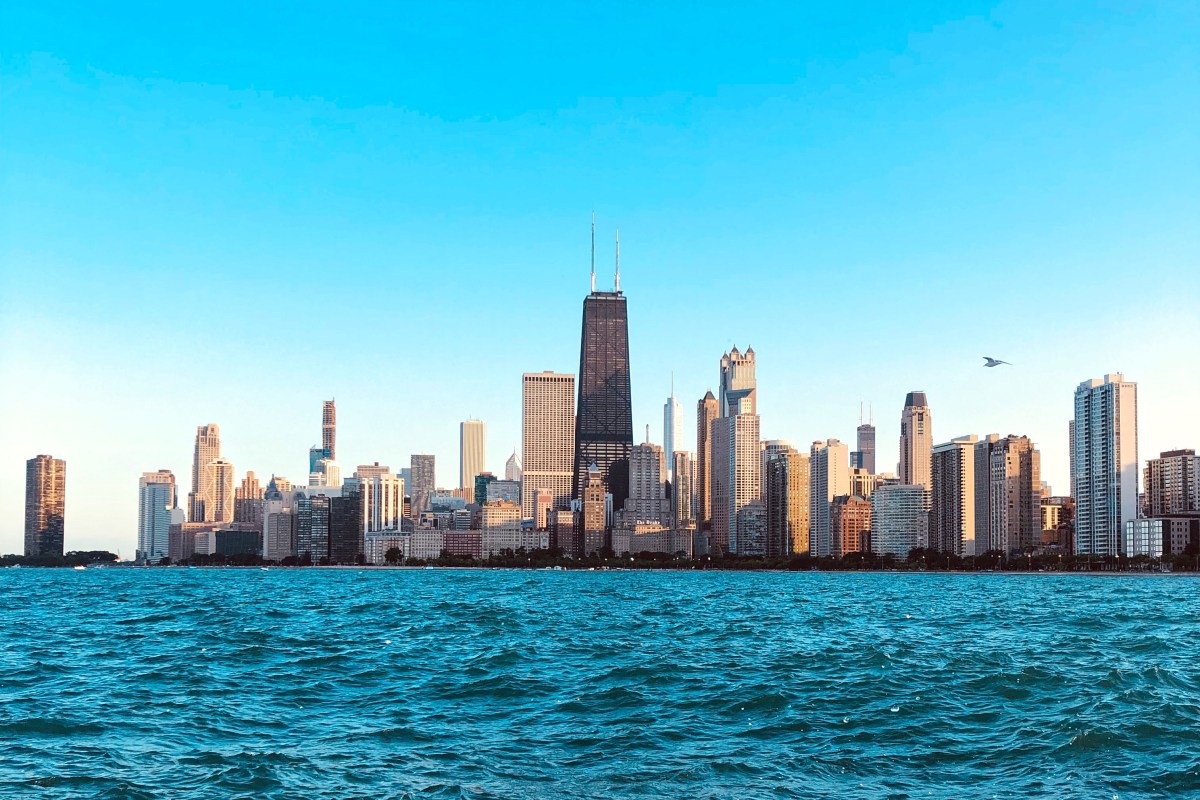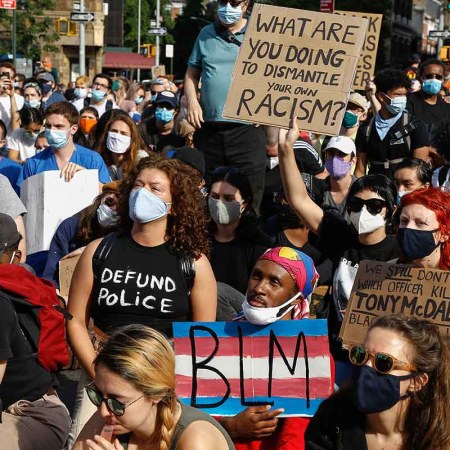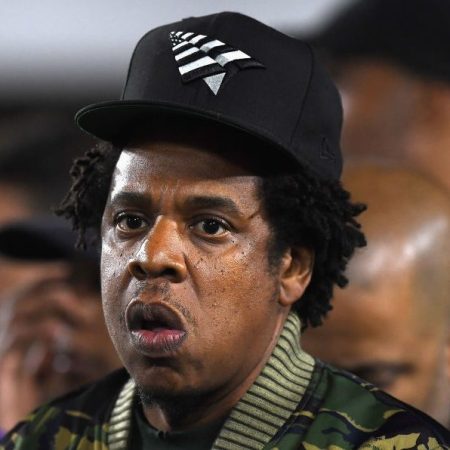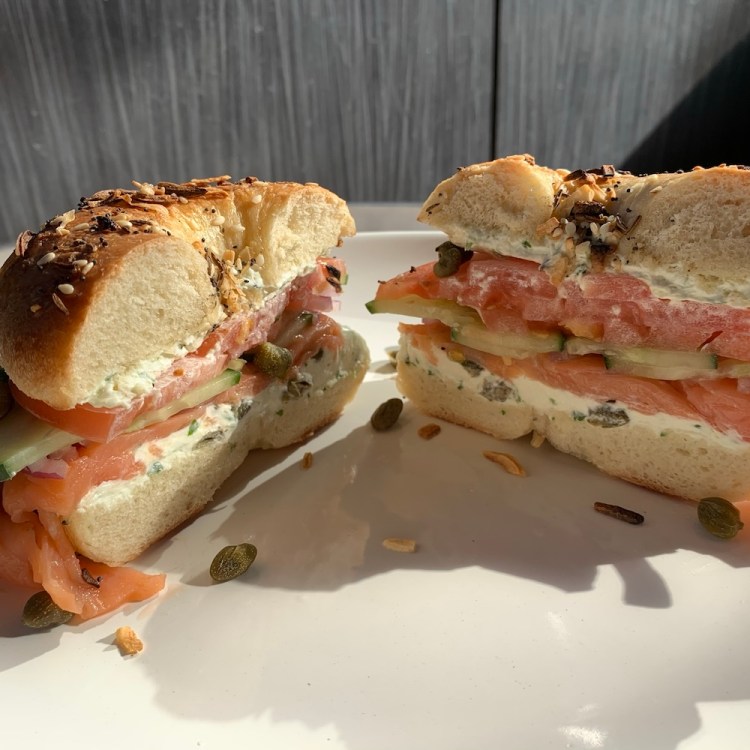The last 10 years of Chicago news — especially nationally — have been less than stellar. Our city’s positive attributes took a backseat to subzero temperatures, police brutality and gun violence, the latter of which earned a national stage when then-GOP candidate Donald Trump mentioned Chicago more than four dozen times during his campaign for president.
So with a new decade ahead of us, we decided to ask eight thought and business leaders around the city for their opinion on the single biggest challenge facing the city, and what we can collectively do to fix it.
These are people who spend every day working on the big, complex problems of a big, complex metropolis. You will definitely see a theme — equality is more than a buzzword — that reflects a systemic illness that manifests in various forms across various industries.
What follows is the (potentially uncomfortable) reality of being a city that benefited from the Great Migration of the 20th century, a distinction that typically included a legacy of severe segregation. The good news? These leaders are hopeful and resolute that solutions are on the horizon.
Helene Gayle
CEO of Chicago Community Trust
What do you feel is the biggest issue facing the city of Chicago in the coming decade?
The racial and ethnic wealth gap.
The reality is that no matter where you live or what your background, racial and economic inequities impact all Chicagoans. In a 2017 report by the Metropolitan Planning Council — “The Cost of Segregation” — the data indicated that the cost of racial and economic inequity in the region is $8 billion a year in gross domestic product. The racial and ethnic wealth gap and the under-investment we see in predominantly Black and Latinx communities rest upon decades, even centuries, of local and federal policies that explicitly denied Black and Latinx households from building the wealth that white households have been able to accumulate over generations. According to the Urban Institute, for every $100 in White family wealth, Latinx families have $12, and Black families have $10.
What are the barriers to improving the situation?
We are where we are because of decades of discriminatory policies and systems such as redlining, gentrification and displacement, unequal access to capital, and lack of job opportunities for people of color that fueled the inequities we see today. This means we won’t be able to turn things around overnight, but we believe it is possible through an integrated strategy and partnership.
What can be done in the next 10 years?
The reality is that discriminatory policies, practices and systems got us here, and it needs to be systems and policy changes that get us out from where we are. There is no single policy, program or pathway that will narrow the gap. Closing the wealth gap will require a multifaceted, systems-focused approach that looks at income policy, tax policy, lending and consumer protections, housing and economic development policy, and government practices that extract wealth from communities (like municipal and judicial fines and fees).
What would resolution of this issue look like? That is to say, looking back from 2030, what would be the ideal situation look like?
By addressing the issue of wealth inequality, we believe we can also help to make a difference in so many of the other challenges we face in our city and region. We would see economically vital neighborhoods. We would see schools improve. We would see property values increase. We would see crime and violence decrease. All the things that you associate with vitality within a neighborhood are what we believe we will achieve by addressing this issue.
Is there anything the average Chicagoan can do to help?
Get educated, get proximal, lend your voice and give. Learn more specifics here.
Chasda Martin
Director of Programs for READI Chicago (A Heartland Alliance Program)
What do you feel is the biggest issue facing Chicago in the coming decade?
Gun violence.
Despite declines in shootings and homicides in the past three years, Chicago continues to face a public health crisis: violent crime. Gun violence in Chicago is concentrated among a small number of highly disadvantaged neighborhoods, disproportionately impacting our most vulnerable citizens. Despite containing only 8 percent of Chicago’s population, just five neighborhoods accounted for 30 percent of the homicides in 2018. People grow up with no examples of a different path, and they are dying because of this.
What do people need to know about this issue that they don’t right now?
Chicago must treat violent crime as a public health crisis and provide adequate investment to fund violence reduction, intervention and prevention programs in Chicago. Being born into the wrong zip code can change your life forever. The majority of the men we work with are literally born into their circumstances — in disinvested neighborhoods with under-resourced schools, high unemployment and incarceration rates and a real lack of positive role models. We cannot tell people to stop doing what they’ve always known without offering them a better alternative. In the five neighborhoods we target with the READI Chicago program, nearly 80 percent of the men we are working with have had a loved one killed by violence. Not an acquaintance, a loved one: a brother, a mother, a father, an uncle, a cousin — perpetuating the cycle of trauma.
How can it be solved?
We launched READI Chicago because we believe that connecting the highest-risk people to critical support has the potential to save lives now and to create greater opportunity and safety for everyone over the long term. READI Chicago connects people most at risk of gun violence involvement with employment in paid transitional jobs, cognitive behavioral therapy, and support services to help them create a viable path for a different future. It will take community and government support to reduce violence in the city.
What are the greatest barriers to improving the situation?
It will take public community and government support to reduce gun violence in the city. Over the past two years, the philanthropic community has provided approximately $70 million in support of innovative gun violence solutions. Given the scale of the violence, we believe the public sector must match or surpass this financial commitment in order to have the strongest impact.
Jack Lavin
Chicagoland Chamber of Commerce President and CEO
In your position, what do you see as the biggest issue facing Chicago in the new decade?
Population decline.
Lavin points to recent census data that shows the Chicago area has lost population for the past four years, and the metro area alarmingly fell below 9.5 million for the first time since 2010. It’s not just the city: Illinois’s population shrunk by more than any other state from 2010 to 2019.
He says we have to “stem the tide of an exodus from our region and state.”
How can it be solved?
We must grow our population, and essential to doing so is creating jobs. One of the keys to creating jobs is investing in our infrastructure. Mobility means opportunity and we need to have the infrastructure in place to ensure people have the opportunity to obtain employment. [Second], we also need to create an environment and policies that encourage companies to continue relocating and growing here and we need to entice venture capitalists to invest in our entrepreneurs.
Are you optimistic about the future?
There is a lot of excitement in Chicago and we need to harness that and continue our growth, not pass regulations that will discourage our businesses from growing and hiring. We have the pipeline of talent at our community colleges and world-class universities. We need to invest in that talent through job training and apprenticeship programs, and then we need to create the jobs and the infrastructure that will keep people in Chicago and in our state.
Christina Hachikian
Executive Director, Rustandy Center for Social Sector Innovation at the University of Chicago Booth School of Business
In your position, what do you see as the biggest issue facing Chicago in the new decade?
Equality in wealth-building.
Inequality will be the biggest issue Chicago, and frankly, our country, faces this decade. Access for all to quality education and jobs and to affordable housing will determine whether all Chicagoans can build wealth and thriving communities. As a city, we need to reverse the ongoing trend of the city’s south and west sides being hollowed out, creating a spiral of pessimism and posing a real threat to the city’s prosperity.
How do you buck the status quo and find solutions to this problem?
There is no single solution that will ensure that those with access to the fewest resources today are able to build wealth at faster rates in the future. It will take businesses, nonprofits, and governments working together to activate proven solutions that not only improve incomes and stability, but truly build wealth in communities.
Business investment generates jobs and new purchasing power for their employees. Schools and universities can provide the training and research to help entrepreneurs and those running social sector organizations. Nonprofits, often those closest to community interests, can be the voice for solutions that are coming directly from our communities, and can work in partnership with public and private interests to deliver an array of key services. The City’s role is wide and crucial – from zoning to new housing to direct investment and strongly encouraging business engagement.
Are you hopeful for a resolution for Chicago?
The good news is that Chicagoans are shining a spotlight on this issue, and we have the chance as a city to lead the nation on solutions that help more of our citizens build wealth for people and strengthen our overall economy. A more equal society, a more equal neighborhood, is good for everyone.
Ryan Crane
Founder, CEO of Tempo CBD Wellness Beverages
Cannabis is still newly legal in the state. With an entire industry on the rise, what will be the biggest issue facing this green sector in the new decade?
Social equity.
The focus will be how we can build a more equitable and inclusive landscape of owners in cannabis. From the entrepreneurial perspective, there’s tremendous opportunity for local small business owners. Many business owners fall into the trap of thinking that they need to operate a dispensary or own a grow-site to enter the cannabis industry, but there’s a tremendous economy of ancillary businesses and services around the cannabis plant, most of which do not require the same licenses and upfront costs to operate.
Illinois has done a great job shining a spotlight on the need for social equity in cannabis, and has placed that need front and center in new license applications.
Explain the social-equity initiatives in the cannabis industry, and what Illinois is doing that’s so special.
Social equity has become a very important issue in recent years as more states seek to legalize adult use programs, and Illinois has been recognized as having a particularly ambitious social-equity program. The program is made up of three parts. First, there is the social equity applicant system, whereby individuals qualifying as social-equity applicants have a 20% scoring advantage over non-social equity applicants. The social-equity applicants who are awarded licenses are also eligible to apply for low-interest loans from the state, funded by the existing license holders. Second, there is an expansive expungement program for individuals who have been arrested or convicted of low-level cannabis crimes. Last, and unique to Illinois so far, is the “R3” program, which is a government grant program that will fund local nonprofits working to serve communities that have been particularly impacted by the War on Drugs. It is the combination of all three elements of this program that truly distinguish Illinois’s social equity program.
How is your organization contributing to the solution?
Since the legalization of adult-use cannabis in Illinois, there has been an amazing surge of community engagement and support from stage programs, advocacy groups, community leaders, universities, established cannabis companies and more. Yet barriers to entry for entrepreneurship in cannabis remain extreme. We want to do our part to change that. In 2020, we are launching programming to support local entrepreneurship in cannabis — including those focusing on ancillary business and services and consumer products. Our goal is to provide the early-stage resources that are often overlooked or under-professionalized when getting a business off the ground.
Sylvia Puente
Executive Director of the Latino Policy Forum
In your position, what do you see as the biggest issue facing Chicago in the new decade?
Economic equity for Latinos.
I think one of the biggest problems facing Chicago in the next decade is really understanding how we can have equity in all of our economic, political and educational sectors given the growth of the Latino community. This is particularly important in suburban communities, where all of the Latino demographic growth has been.
How did this become a top priority?
[The] Metropolitan Planning Council released a report last year on the cost of segregation, and their report indicated we will see increased segregation of Latinos in suburban community areas. So as we see increasing diversity, it does not mean increasing integration — in some ways it’s going to lead to an increase in segregation. When we see that, we see a bifurcation of economic mobility and wealth and opportunity in the Latino community between a sector of the community doing really, really well, but also a sector of the community not doing well. We have increasing economic income for Latino households and more families who are earning a foothold into the middle class, but at the same time we see an increase in poverty.
How do we solve this problem?
The Latino Policy Forum, at its core, spends a lot of our time working on education and how to promote increased educational opportunities for Latino children so that we can attempt to mitigate these trends and give young people a head start — the right start — for their trajectory of economic growth and opportunity. All the research says the more children have access to early education, the better their economic opportunities will be.
Liz Dozier
Chicago Beyond Founder and CEO
In your position, what do you see as the biggest issue facing Chicago in the new decade?
Systemic racism.
The biggest issue facing Chicago in this new decade is the same issue that has always been part of our cultural fabric. It’s the ease in which we “otherize” our neighbors, and that somehow our collective liberation is not connected. At its root, we are talking about racism disguised as disinvestment, and policies and practices that continue to uphold inequities that impact all people, regardless of their zip code. Dr. King spoke about an “inescapable network of mutuality,” that whatever affects one directly, affects all indirectly. This single idea was true more than 50 years ago, and I believe it remains one the greatest issues facing society today.
What will be the barriers to resolving this issue?
There is no “solve” to systemic racism or deep-rooted language that has developed over generations, but there is a huge opportunity for anyone to start from the inside by shifting their orientation to others.
To be clear, we all do this. It shows up everywhere, and we barely notice it’s happening. For example, language is one way in which we all disregard our network of mutuality. In Chicago and cities like ours, many refer to our youth who are not working or not in school as “disconnected.” But I would argue we have intentionally structured systems that have disconnected them from us. By propagating that language and not acknowledging the blamelessness of our youth, we are strengthening the idea that our children have chosen to disconnect, rather than their ecosystems failing to provide them with the resources and nutrients they need to “be connected.” This is just one incredibly impactful way we can begin noticing and shifting our orientation to one another — by recognizing and changing narratives that create unnecessary harm.
What do people need to know about this issue that they don’t right now?
The issue of otherizing starts with each of us, individually. Anyone has the opportunity to notice and shift their orientation — whether it be in a conversation with friends or colleagues, or during a board meeting where communities are at the center of the conversation. Take the time to notice how things and people are framed and ask yourself why that is. It all begins with one small change in language that over time, can create a seismic shift in a narrative that impacts our inescapable network of mutuality.
Tonika Johnson
Social Justice Artist, Creator Folded Map Project
I just read you all of the issues that other leaders have cited. With that in mind, what do you think is the biggest issue facing Chicago this decade?
All of these issues are due to systemic racism. I’m with Liz Dozier in her assessment.
Economic development being ignored in certain areas, segregation, gun violence … all of these are symptoms of systemic racism. It plays out in education, economics, home ownership and public safety. How can we create equity while still operating in a system that was literally built to discriminate?
So how do you solve it?
I’m interested in creative solutions, and it starts with getting people to care about each other. The systemic racism and resulting segregation impacts us connecting with each other, creating a larger divide between our city’s social networks, and just continually perpetuating the horrible stereotypes we have of each other. We need Chicago to come together, and that happens when people build relationships across North, South and West.
The city as a whole is thriving off downtown and the North side. Half the city is ripe for opportunity and home ownership! That can happen when we get people to truly care about the South and West side and see beyond the stories they’ve been told – that everything is so horrible. We are such a neighborhood city, we just need everyone to step beyond their neighborhood and advocate for other sides of the city.
How can the average Chicagoan do this?
The My Folded Map Project provides a starting point. If you live at 4800 N Paulina, reach out to the person that lives at 4800 S Paulina. Look at life through another person’s perspective. Make a connection and humanize your neighbor. That’s how we start to dismantle the system. And we all need a starting point with big issues like this.
Editor’s note: Responses have been edited for clarity and brevity.
This article was featured in the InsideHook Chicago newsletter. Sign up now for more from the Windy City.





















